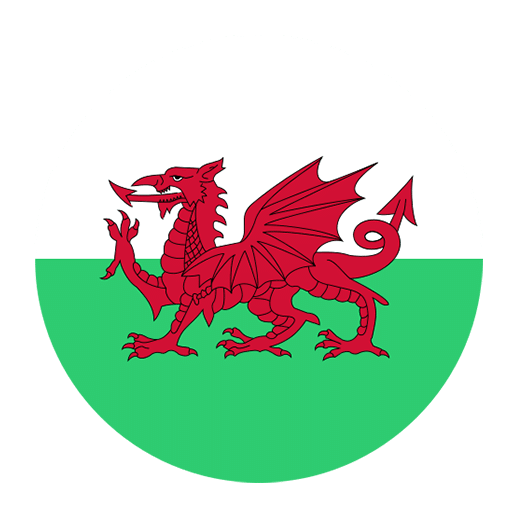Learning a new language is always an exciting and enriching experience. For those diving into the Welsh language, there’s a unique charm that comes with understanding its nuances. Among these nuances are the words “Dafad” and “Dafydd,” which can be particularly interesting and sometimes confusing for new learners. While these two words may sound somewhat similar to non-native ears, they have entirely different meanings. In this article, we’ll explore the distinctions between “Dafad” and “Dafydd,” and delve into the cultural and linguistic importance of these words in the Welsh language.
Dafad: The Sheep
To start with, let’s take a look at the word “Dafad.” In Welsh, “Dafad” means “sheep.” Sheep farming is an integral part of Welsh culture and agriculture, and it’s no surprise that the word “Dafad” holds a significant place in the Welsh lexicon.
Sheep farming has been a cornerstone of Welsh rural life for centuries. The lush green hills and valleys of Wales provide an ideal environment for sheep grazing, making it one of the country’s most common agricultural practices. As a result, the word “Dafad” is not just a term but a reflection of the Welsh way of life.
Usage in Sentences
Understanding how to use “Dafad” in sentences can help solidify its meaning and usage in your mind. Here are a few examples:
– Mae’r dafad yn y cae. (The sheep is in the field.)
– Gwelais i lawer o defaid heddiw. (I saw many sheep today.)
– Mae’r ffermwr yn gofalu am ei ddafad. (The farmer is taking care of his sheep.)
As you can see, “Dafad” is singular, while “defaid” is the plural form of the word. This distinction is crucial when forming sentences and is a common pattern in Welsh where the plural forms often vary significantly from their singular counterparts.
Dafydd: The Name David
Next, let’s turn our attention to the word “Dafydd.” In Welsh, “Dafydd” is a male given name, equivalent to “David” in English. It is a name of great historical and cultural significance in Wales.
One of the most famous bearers of this name is Saint David (Dewi Sant in Welsh), the patron saint of Wales. Celebrated on March 1st, Saint David’s Day (Dydd Gŵyl Dewi Sant) is a national holiday in Wales, marked by parades, concerts, and the wearing of daffodils and leeks, both of which are national symbols.
Usage in Sentences
Here are some examples of how “Dafydd” might be used in Welsh:
– Helo, fy enw i yw Dafydd. (Hello, my name is David.)
– Mae Dafydd yn byw yn Abertawe. (David lives in Swansea.)
– Roedd Dafydd yn fardd adnabyddus. (David was a well-known poet.)
In these sentences, you can see how “Dafydd” is used as a personal name, much like “David” would be in English.
Phonetics and Pronunciation
For non-native speakers, Welsh pronunciation can be one of the most challenging aspects of learning the language. Both “Dafad” and “Dafydd” have unique pronunciations that are important to master.
Pronouncing Dafad
The word “Dafad” is pronounced approximately as “DAH-vad.” Here’s a breakdown:
– “D” is pronounced like the English “d.”
– “a” is pronounced like the “a” in “father.”
– “f” is pronounced like the English “v.”
– “a” again is like the “a” in “father.”
– “d” is pronounced like the English “d.”
So, the word should sound like “DAH-vad.”
Pronouncing Dafydd
The word “Dafydd” is pronounced approximately as “DAH-vith” or “DAH-vudd,” depending on the regional accent. Here’s a breakdown:
– “D” is pronounced like the English “d.”
– “a” is pronounced like the “a” in “father.”
– “f” is pronounced like the English “v.”
– “y” can be a bit trickier, often pronounced like the “i” in “sit.”
– “dd” is pronounced like the voiced “th” in “this” or “that.”
So, the word should sound like “DAH-vith” or “DAH-vudd.”
Cultural Significance
Both “Dafad” and “Dafydd” hold substantial cultural significance in Wales, albeit in different ways.
Dafad in Welsh Culture
Sheep have been vital to the Welsh economy and way of life for centuries. Sheep farming in Wales dates back to ancient times, and the industry continues to be a significant part of rural Welsh communities. The sheep is not just an animal but a symbol of the Welsh countryside and its enduring agricultural traditions.
In literature and folklore, sheep often appear in Welsh stories and songs. For example, the traditional Welsh folk song “Dafydd y Garreg Wen” (David of the White Rock) mentions sheep and pastoral life, reflecting the deep connection between the Welsh people and their land.
Dafydd in Welsh History
The name “Dafydd” has been borne by many notable historical figures in Wales. Besides Saint David, there was Dafydd ap Gruffydd, the last independent Prince of Wales, who fought against English conquest in the 13th century. His defiance and ultimate execution marked a significant period in Welsh history, symbolizing the struggle for Welsh independence.
Additionally, the name “Dafydd” has been popularized in Welsh literature and poetry. Dafydd ap Gwilym, a 14th-century poet, is one of the most famous literary figures in Wales. His works, characterized by their lyrical beauty and vivid imagery, have had a lasting impact on Welsh culture and literature.
Common Mistakes and Tips for Learners
Given the similarities in sound, it’s easy for learners to mix up “Dafad” and “Dafydd.” Here are some tips to help you remember the differences:
– **Context is Key:** Remember that “Dafad” is a common noun meaning “sheep,” while “Dafydd” is a proper noun used as a personal name. The context in which the word is used will often make it clear which one it is.
– **Practice Pronunciation:** Spend time practicing the pronunciation of both words. Use language learning apps, listen to native speakers, and try to mimic their pronunciation. This will help you distinguish between the subtle differences in sound.
– **Use Mnemonics:** Create a mnemonic to help you remember the meanings. For example, you might think of “Dafad” as “DA-vad the sheep” and “Dafydd” as “DA-vid the person.”
– **Engage with Welsh Culture:** The more you engage with Welsh culture, the more familiar these words will become. Watch Welsh films, listen to Welsh music, and read Welsh literature. Immersing yourself in the language and culture will help reinforce your learning.
Conclusion
Understanding the difference between “Dafad” and “Dafydd” is a small but significant step in mastering the Welsh language. These words, while seemingly simple, open a window into the rich cultural and historical tapestry of Wales.
By learning to distinguish between “Dafad” and “Dafydd,” you not only improve your language skills but also gain a deeper appreciation for the heritage and traditions of Wales. Whether you’re discussing the pastoral landscapes dotted with sheep or delving into the history of Welsh saints and poets, these words will undoubtedly enrich your Welsh language journey.
So, the next time you hear “Dafad” or “Dafydd,” you’ll know whether the conversation is about a woolly farm animal or a person named David. Happy learning, and pob lwc (good luck) on your Welsh language adventure!

